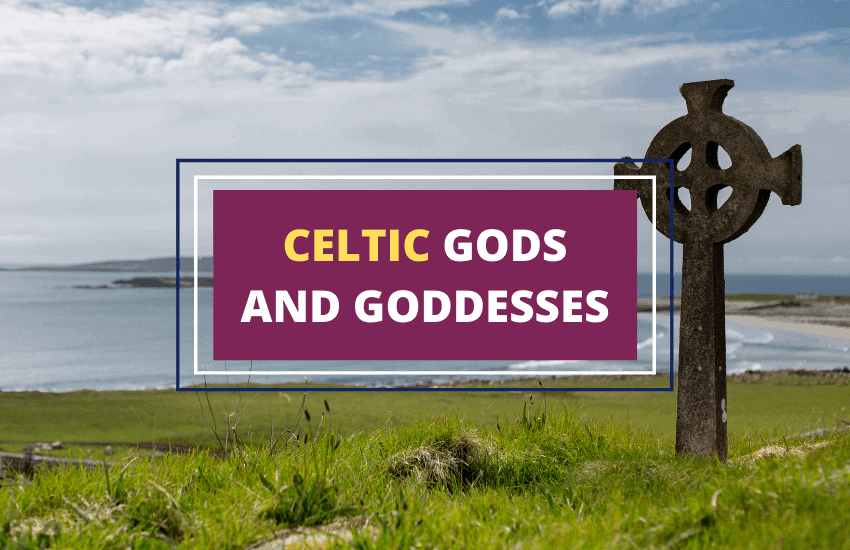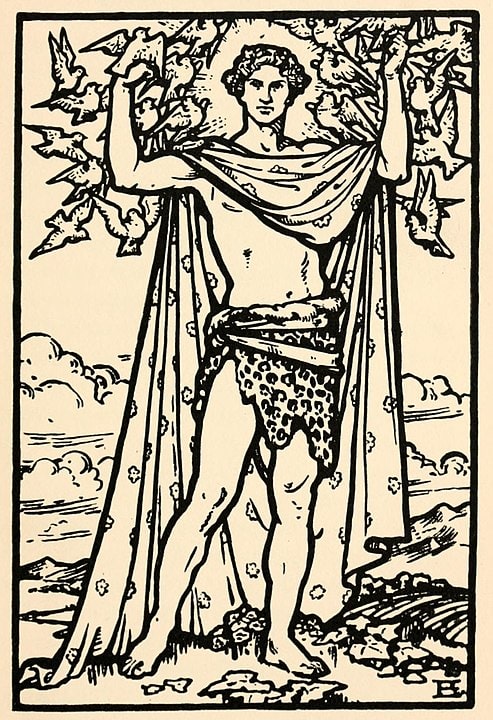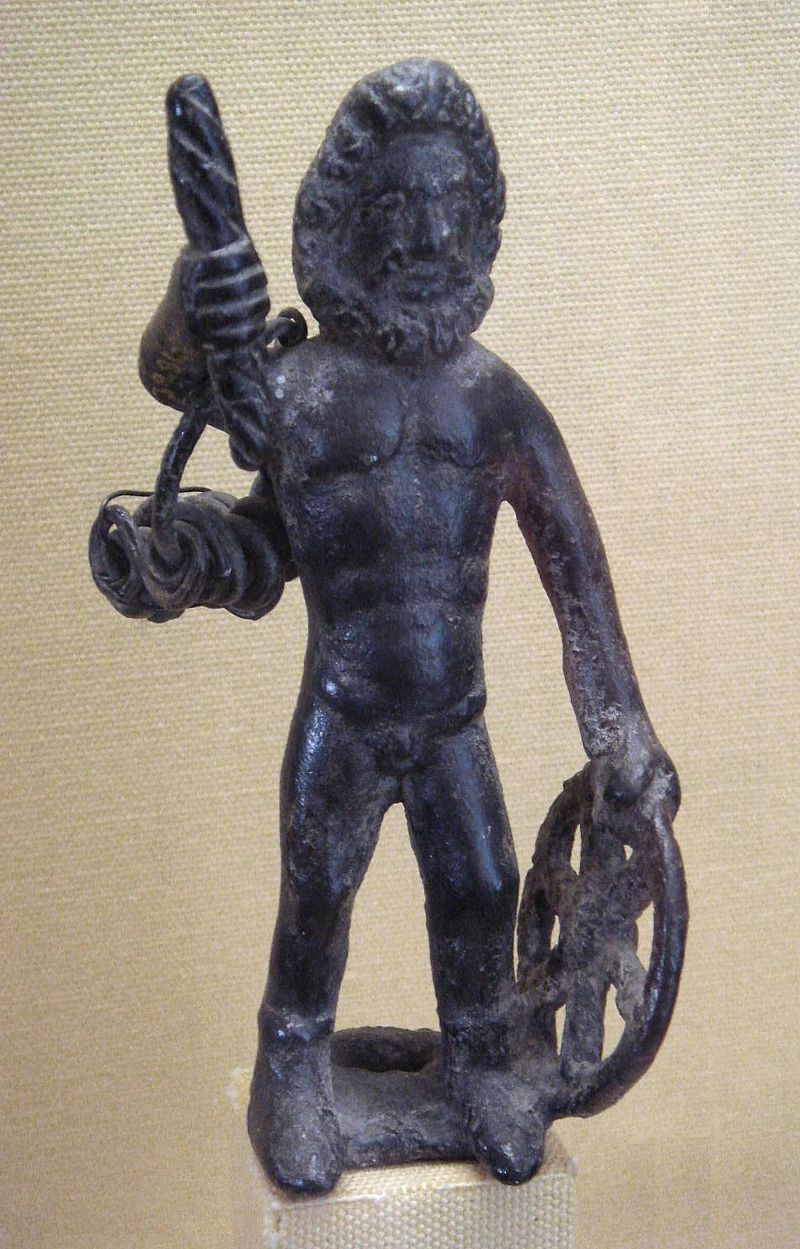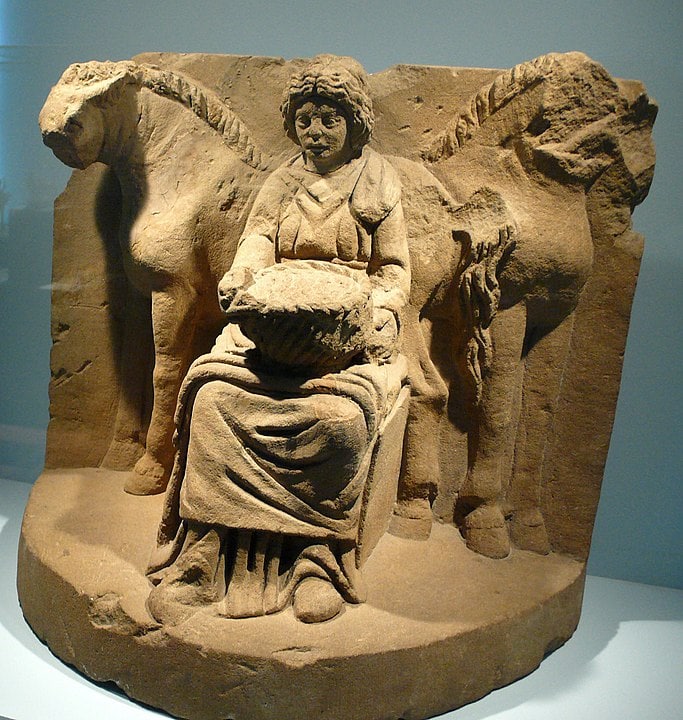
Table of Contents
The Celts were a diverse group of people, who lived across various regions such as Ireland, Portugal, Italy and Britain. Their culture, religion, and belief systems were influenced by the various regions they resided in, and they imbibed and adopted the distinct mythology, rituals, and worship practices of each place.
Much of Celtic mythology has been influenced by pre-existing oral traditions and narratives, particular to a specific location or region. They worshipped a plethora of deities, and each one of them were closely linked to the natural world. Let’s take a closer look at the major deities in Celtic religion and mythology.
Ana/Dan – Primordial Goddess of Creation, Fertility, and Earth
Also known as: Anu/Anann/Danu
Epithets: Mother Goddess, The Flowing One
Danu was one of the most ancient Celtic goddesses, worshipped in Ireland, Britain, and Gaul. As a mother goddess, she was said to have birthed the ancient people of Dana, known as the Tuatha dé Danann. They were the first Celtic tribe gifted with otherworldly skills and abilities. The Tuatha dé Danann looked up to Danu as their guardian and protector.
Danu was a goddess of nature, and closely associated with the process of birth, death, and regeneration. She was also an emblem of abundance, prosperity and wisdom. Some historians deduce that she also could have been worshipped as the goddess of wind, water, and earth.
Dagda – God of Life, Death, Magic and Wisdom
Also known as: An Dagda, The Dagda
Epithets: Good God, All-Father, Mighty One of Great Wisdom
Dagda was the leader and chief of theTuatha Dé Danann tribe. He was venerated as a protective father-figure, especially amongst the people of Gaelic Ireland.
He is depicted as a plump old man, and carried a magical staff, cauldron, and harp. His staff had the power both to kill people and resurrect them from the dead. His never-ending, bottomless cauldron reflected his passion for food, and the accompanying ladle was a symbol of abundance.
Dagda was the master of druidic magic, and his enchanted harp had the power to regulate the climate, weather, and seasons.
Aengus – God of Love, Youth, and Creative Inspiration

Also known as: Óengus, Mac ind Óic
Epithet: Aengus the Young
Aengus was the son of Dagda and the river goddess Bionn. His name meant true vigour, andhe was the leading poet of theTuatha dé Danann tribe. Aengus’ enchanting music had the ability to charm everyone, including young women, kings, and even his enemies. He was always surrounded by a group of four fluttering birds, that symbolized his passionate kisses.
Although many people were charmed by him, Aengus could only reciprocate his affections for Caer Ibormeith, a young girl who appeared in his dreams. His immense love and affection for this girl, was an inspiration to young Celtic lovers, who venerated Aengus as their patron deity.
Lugh – God of the Sun, Skills and Craftsmanship
Also known as: Lugos, Lugus, Lug
Epithets: Lugh of the Long Arm, Lleu of the Skilful Hand
Lugh was one of the prominent solar deities in Celtic mythology. He was worshipped as a warrior god and was honored for slaying the enemy of the Tuatha Dé Danann.
He was a god of many skills and was credited with the invention of fidchell, ball games, and horse racing. Lugh was also the patron deity for creative arts.
The royal family worshipped him as an emblem of truth, justice and rightful kingship. In Celtic art and paintings, he was depicted with his armour, helmet, and invincible spear.
Morrigan – The Goddess of Prophecies, War and Fate
Also known as: Morrigu, Mór-Ríoghain
Epithets: Great Queen, Phantom Queen
Morrigan was a powerful and mysterious deity in Celtic mythology. She was a goddess of war, destiny, and fate. She had the ability to shape-shift into a crow and foretell death.
Morrigan also had the power to instill the spirit of war among men, and help lead them to victory. She was a great assistance to Dagda in the battle against the Formorii.
Although Morrigan was essentially a war goddess, the Celtic people venerated her as a guardian of their lands. In later Irish folklore, she came to be associated with the Banshee.
Brigid – Goddess of Spring, Healing and Smithcraft
Also known as: Bríg, Brigit
Epithets: Exalted One
Brigid was an Irish goddess of spring, renewal, fertility, poetry, battle, and crafts. She was often represented as a solar goddess, and formed a triple deity with Brigid the Healer, and Brigid the Smith.
Brigid was also a patron deity for domestic animals, such as the oxen, sheep, and boars. These animals were important to her livelihood, and they warned her of immediate dangers. During the Middle Ages, the Celtic goddess was syncretized with the Catholic Saint Brigid.
Belenus – God of the Skies
Also known as: Belenos, Belinus, Bel, Beli Mawr
Epithets: Fair Shining One, Shining God
Belenus was the most widely worshipped solar deity in Celtic religion. He traversed the skies on a horse driven chariot and was the patron god of the city of Aquileia. Belenus was honored during the festival of Beltane, which marked the healing and regenerative powers of the sun.
At a later point in history, Belenus came to be associated with the Greek god Apollo, and acquired the God’s healing and regenerative characteristics.
Ceridwen – White Witch and Enchantress
Also known as: Cerridwen, Cerrydwen, Kerrydwen
Ceridwen was a white witch, enchantress, and sorceress. She carried a magical cauldron, in which she brewed Awen, or the power of poetic wisdom, inspiration and prophecy.
Her magical potion had the power to instigate people with creativity, beauty, and shape-shifting abilities. In some Celtic myths, she’s also believed to be the goddess of creation and rebirth. As a white witch, Ceridwen was good and benevolent towards her people.
Cernunnos – God of Wild Things
Also known as: Kernunno, Cernonosor Carnonos
Epithet: Lord of the Wild Things
Cernunnos was a horned god, commonly associated with animals, plants, forests and woodlands. He was especially connected with animals, such as the bull, stag, and ram-headed serpent.
He often mediated between the wild beasts and mankind, to establish a balance and harmony in the universe. Cernunnos has also been venerated as a deity of fertility, abundance, and death.
Taranis – God of Thunder

Also known as: Tanarus, Taranucno, Tuireann
Epithet: The Thunderer
Taranis was the Celtic God of thunder. In Celtic art and paintings, he was depicted as a bearded man, who carried a lightning bolt and solar wheel. He had a special ability to wield and throw lightning to great distances. The wheel carried by the god was a symbol of cyclic time and represented the rising and setting of the sun. Additionally, the eight spokes of the wheel were associated with major Celtic celebrations and festivals.
Taranis was also associated with ritualistic fire, and several men were routinely sacrificed in order to appease and honor the god.
Nuada – God of Healing
Also known as: Nuadu, Nudd, Ludd
Epithet: Silver hand/arm
Nuada was the Celtic god of healing and the first king of the Tuatha dé Danann. He was predominantly renowned for his reclamation of the throne. Nuada lost his hand in battle and had to step down as the ruler. His brother helped replace his hand with a silver one, so that he could once again ascend the throne. As a wise and benevolent ruler, the people were happy to have him back. Nuada carried a special and invincible sword that had the ability to cut the enemies in half.
Epona – Goddess of Horses

Epithet: Horse-Goddess, The Great Mare
Epona was the Celtic goddess of horses. She was especially popular amongst the cavalry, as horses were used both for transportation and for battle. Celtic Kings would symbolically marry Epona, to assert their royal status.
Epona was usually depicted on a white mare, and in contemporary times, she has appeared in the popular Nintendo’s game series.
In Brief
The Celts had gods and goddesses for almost all aspects of their day-to day life. Although the meaning and significance of several deities have been lost, from the information that has been gathered, we can deduce the importance attributed to each of these divine entities.








